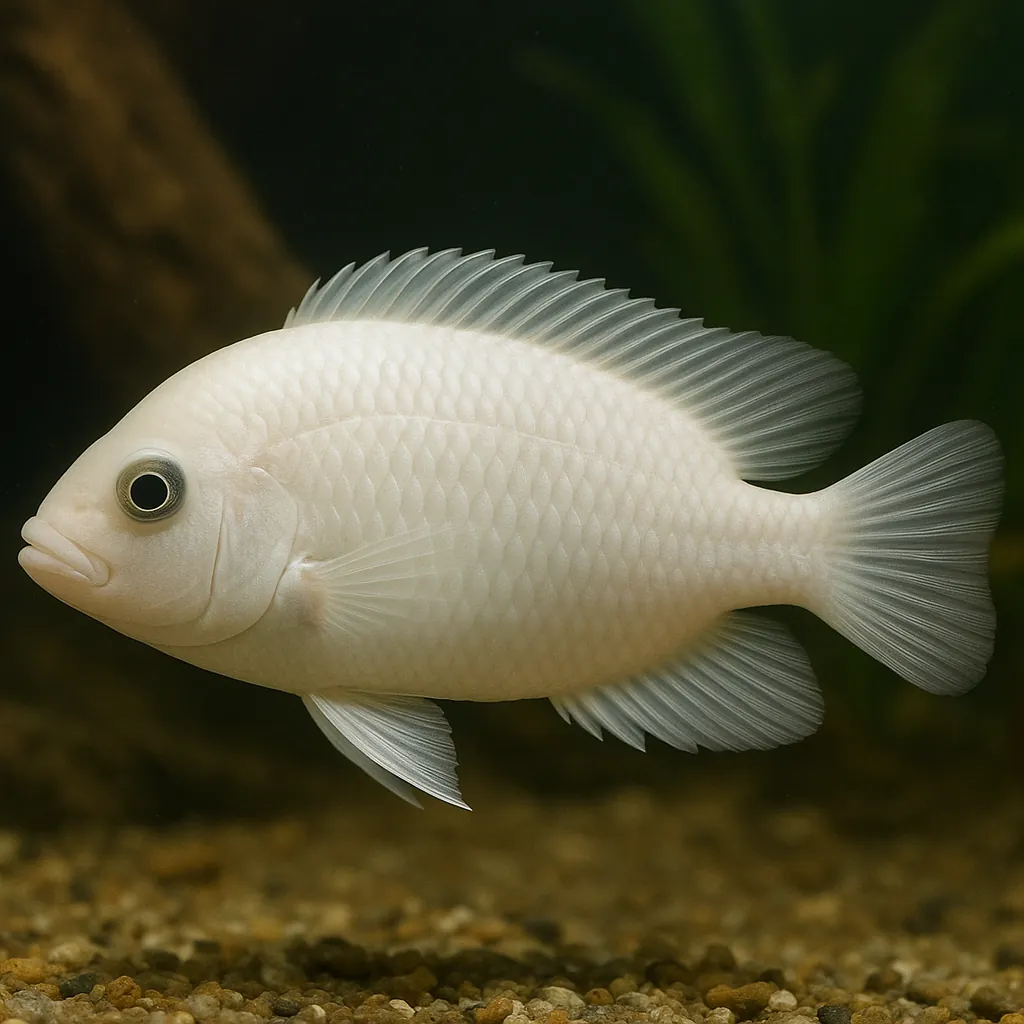
White cichlid
The term "White Cichlid" can refer to several species within the cichlid family, each with unique characteristics and care requirements. Notable examples include the Snow White Cichlid (*Pseudotropheus socolofi* albino variant), the White Spotted Cichlid (*Tropheus duboisi*), and the White Lamprologus (*Altolamprologus calvus*). This article provides an overview of these species, highlighting their appeal to aquarists and summarizing their care levels and special traits.
**What makes White Cichlids appealing to aquarists?**
White Cichlids are prized for their striking appearances and engaging behaviors. Their unique colorations and patterns add visual interest to aquariums, while their dynamic interactions provide endless fascination for fishkeepers.
**Are White Cichlids suitable for beginner aquarists?**
While some White Cichlid species can be managed by beginners, others require more experience due to specific care needs or temperaments. It's essential to research each species thoroughly to determine its suitability for your skill level.
**Do White Cichlids have any special traits?**
Yes, many White Cichlids exhibit unique behaviors such as mouthbrooding, territoriality, and complex social structures, making them particularly interesting to observe and care for.
Care and Environment
Proper care for White Cichlids involves understanding their specific needs regarding tank size, water parameters, diet, and habitat setup. **What is the minimum tank size for White Cichlids?** The minimum tank size varies by species. For instance, the Snow White Cichlid requires at least 115 liters, while the White Spotted Cichlid needs a minimum of 190 liters. Providing adequate space is crucial to accommodate their active nature and territorial behaviors. **What are the ideal water parameters for White Cichlids?** Maintaining stable water conditions is vital. Generally, a temperature range of 24–28°C, pH between 7.8 and 9.0, and water hardness of 10–20 dGH are suitable. However, specific requirements may vary among species, so it's important to tailor conditions accordingly. **How should I set up the tank for White Cichlids?** A well-structured environment with plenty of rocks, caves, and hiding spots is essential to mimic their natural habitats and reduce aggression. A sandy or fine gravel substrate is recommended, and moderate lighting can enhance their coloration. Regular water changes and efficient filtration are necessary to maintain water quality.Origin and Habitat
Understanding the natural habitats of White Cichlids can inform better care practices. **Where do White Cichlids originate?** White Cichlids are native to various regions in Africa. For example, the Snow White Cichlid hails from Lake Malawi, while the White Spotted Cichlid is endemic to Lake Tanganyika. **What type of environments do they inhabit?** These cichlids typically reside in rocky shorelines with sandy substrates, where they find shelter and establish territories. The water in these lakes is alkaline and hard, conditions that should be replicated in the aquarium. **Do their natural habitats influence their care requirements?** Yes, replicating their natural environments in captivity helps reduce stress and promotes natural behaviors, leading to healthier and more active fish.Temperament and Compatibility
White Cichlids exhibit a range of behaviors that influence their compatibility with other fish. **Are White Cichlids aggressive?** Many White Cichlid species display territorial behaviors, especially during breeding. While some are relatively peaceful, others can be aggressive toward conspecifics or other species. **What tank mates are suitable for White Cichlids?** Compatible tank mates include other cichlids with similar temperaments and size, such as certain species from Lake Malawi or Lake Tanganyika. Avoid housing them with smaller, more passive fish to prevent bullying. **How can I minimize aggression in the tank?** Providing ample space, hiding spots, and maintaining appropriate male-to-female ratios can help reduce aggression. Introducing tank mates simultaneously and monitoring interactions closely is also beneficial.Interesting Facts
White Cichlids possess several intriguing traits that captivate aquarists. **Do White Cichlids exhibit unique breeding behaviors?** Yes, many species are mouthbrooders, where females carry fertilized eggs in their mouths until they hatch, offering protection to the developing fry. **How do White Cichlids change as they mature?** Some species, like the White Spotted Cichlid, undergo significant color changes from juvenile to adult stages, adding visual interest to the aquarium. **Are White Cichlids rare in the aquarium trade?** Certain species are less commonly available and may be sought after by enthusiasts, making them prized additions to specialized collections.Sources
All information in this article has been gathered from the following reputable sources:Overview
Recommended Tank Size 50.2 Gallons (for groups of 6 or more) |
Minimum Group Size 1 |
Minimum Tank Volume 30.4 Gallons |
Maximum Adult Length 4.7 inches |
Average Adult Length 3.9 inches |
Shoaling (6+ required) No |
Preferred Water Type Freshwater, hard, alkaline |
Temperature Range (°C) 24–28 |
pH Range 7.8–9.0 |
Water Hardness (dGH) 10–20 |
Typical Lifespan (years) 8 years |